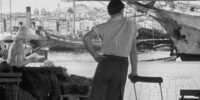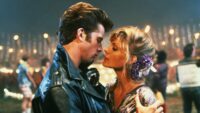For me, discovering Rocky Horror came in stages, with one incarnation of it followed by another, then another. I first got into it when I was 13, growing up in the U.K. It was the summer of ’98, and I was staying with a friend for a week. She played me the soundtrack of a production of the play that her mum had. We listened to it over and over. When I left, she copied it onto a cassette tape for me, and I listened to it constantly for the rest of the summer.
I hadn’t seen the movie yet—I hadn’t even seen the play. I’d only listened to it. It wasn’t even one of the original productions, but one from the early ‘90s. However, one thing was special about it—unlike other soundtracks, this one included all of the dialogue from the play as well as the songs. It was also a fantastic version—still one of my favorites—marketed as The Rocky Horror Show: The Whole Gory Story.
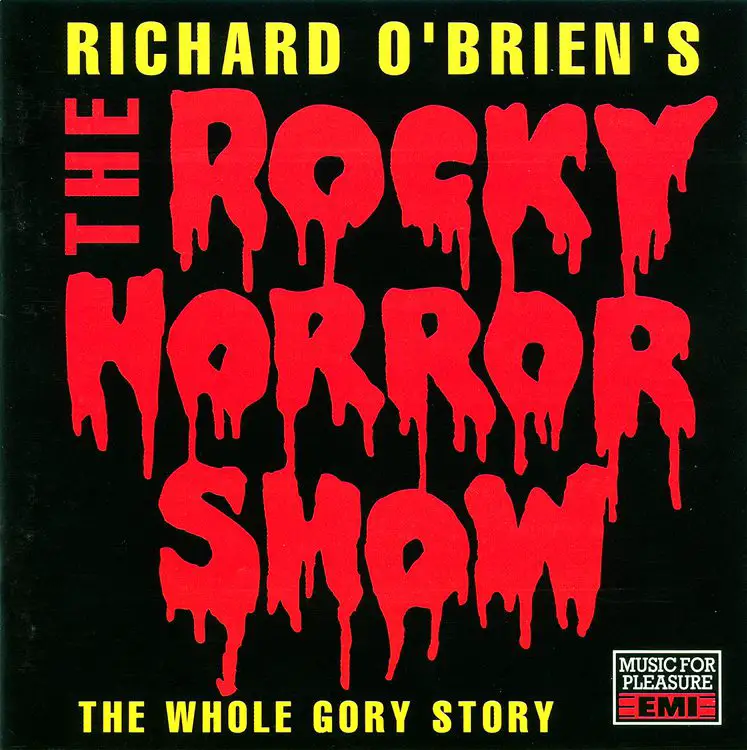
When I listened to it over and over that summer, something about it struck a chord with me, and it changed my life. I’d never felt so connected to anything I’d seen or heard, though I couldn’t quite explain it. I was obsessed from then on. I dedicated school art projects to Rocky, I wouldn’t stop talking about Rocky, and I spent my free time poring over Rocky fansites. I read about the shadow casts in the U.S., who act out the movie while it plays on the big screen every week, and I wished we had them in the U.K.
Instead, I had to make do with finally watching the movie on VHS as the summer drew to a close. About six months later, I got to see the play for the first time. A few years after that, I saw a kind of partial shadow cast that came to my hometown, but they only performed half of the movie, and it wasn’t the same as seeing a real American cast. By the time I finally did get to see an American cast, I was 20, and it had been seven years since I’d first heard that soundtrack. In those seven years I’d probably watched the film on VHS about fifty times, seen the play about ten times (including once on Broadway), and spent countless hours thinking, reading and talking about Rocky.
In contrast, many Americans (including numerous people I know) have their introduction to Rocky among all the chaos of a shadow cast. They may have a vague idea of what the movie is about, they might dress up as characters they’ve seen from it, and they turn up with their friends for a night of fun—a teenage rite of passage.
During this night, the movie is playing, the cast members are running around in front of the screen, the more seasoned audience members are shouting call backs (funny lines that fit in with the movie), people are switching seats or wandering around the movie theatre to socialize with their friends or make out with strangers, teenagers who got too drunk are stumbling to the bathroom, and people are throwing all sorts of things (audience participation props like confetti, toilet paper, and playing cards) all over the place.
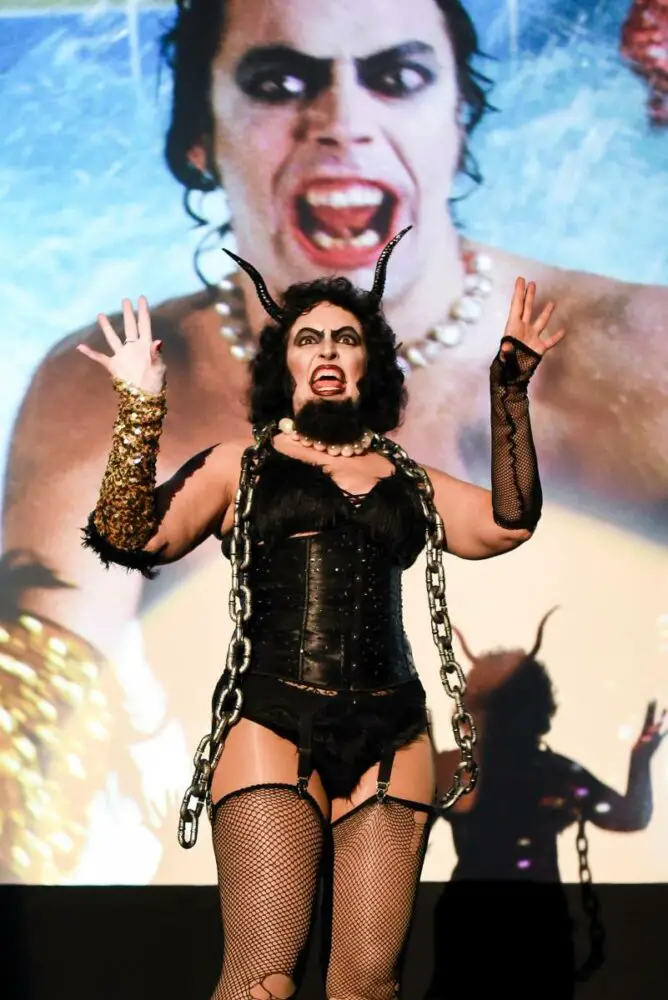
It’s a crazy and unique experience. It’s a lot of fun. It keeps things interesting for the people who’ve seen the movie a hundred times, it keeps people coming back, and it’s kept Rocky in theatres for 44 years so far. But when you’re there, you’re not following the intricacies of the movie’s plot. In the U.S., plenty of people experience the movie like this, not only the first time they see it, but every time they see it, for years, even when they join the local cast. Some insist that this is the only way you should see it—that it’s not enjoyable any other way.
Generally, in the U.K., if you’re a fan of Rocky Horror, it’s because you’re actually a fan of the movie—or the play. When I talk to people in the U.K. who are into Rocky, they all say that they that they think it’s a great movie. Often, they’ll say it’s their favorite. When I finally moved to the U.S., aged 25, started regularly attending Rocky showings with a cast, and a year later joined that cast, I was shocked to find the sentiment over here was somewhat different. It wasn’t the favorite movie of everyone on cast. Not even most people on cast. In fact, several of the cast members said they didn’t even like it.
I couldn’t understand why you would keep coming, why you would bother joining a cast, if you weren’t even a fan of the movie. But people often say they’re there for the community. That’s what they love, and what keeps them coming back, not the movie. The content of the movie certainly has some influence on what the community is like and who finds themselves joining it—in the very broadest terms, outsiders who want a place they can be themselves, but beyond that, queer folks, sci-fi and fantasy fans, goths, fans of rock, metal, and punk—all people who have things in common with each other, because those things are present in the movie that the community is built around.

In the U.S., the Rocky Horror culture is certainly is more focused on the community and the experience than on the movie itself—or the play, which is rarely performed at all over here. This is fair enough, but I believe a lot of people are missing out. Of course, there are some U.S. fans who watch it at home, and who truly love it. However, many people here will only see it in the theatre, with the cast, the chaos, and the noise, and it’s no wonder they don’t appreciate a movie that they can’t even follow. Even if they do take the time to watch it at home, some people have been so conditioned by the call backs and the culture to not take it seriously, to think it’s just a joke—a bad movie that we make fun of and use as an excuse to get together every Saturday night—that they still won’t change their minds.
In the U.K., we’re encouraged to take Rocky more seriously, to listen to what it has to say, and to pay attention to how it’s saying it. The Rocky Horror Show (the play) is hugely popular and successful in the U.K. At any given time, there is almost always a high-quality professional production of it touring the country. When it comes to your town, if you’re a fan, you go to see it.
When you’re watching a first-rate, big-budget, sold-out production in the theatre, you automatically take it seriously. Not in a stuffy way—since this is the only live experience of it around, U.K. audiences do tend to borrow a few tricks from the U.S. casts. We dress up in our underwear, throw a few props, shout out a few call backs, and dance in the aisles. But we also pay attention to the show, to the care and dedication that’s gone into putting it together, and to all the little touches that make it extra special. It’s an impressive, large-scale, professional show, and while it encourages you to have fun and drop some formalities, it also encourages you to appreciate how great it is—not to be dismissive of it.
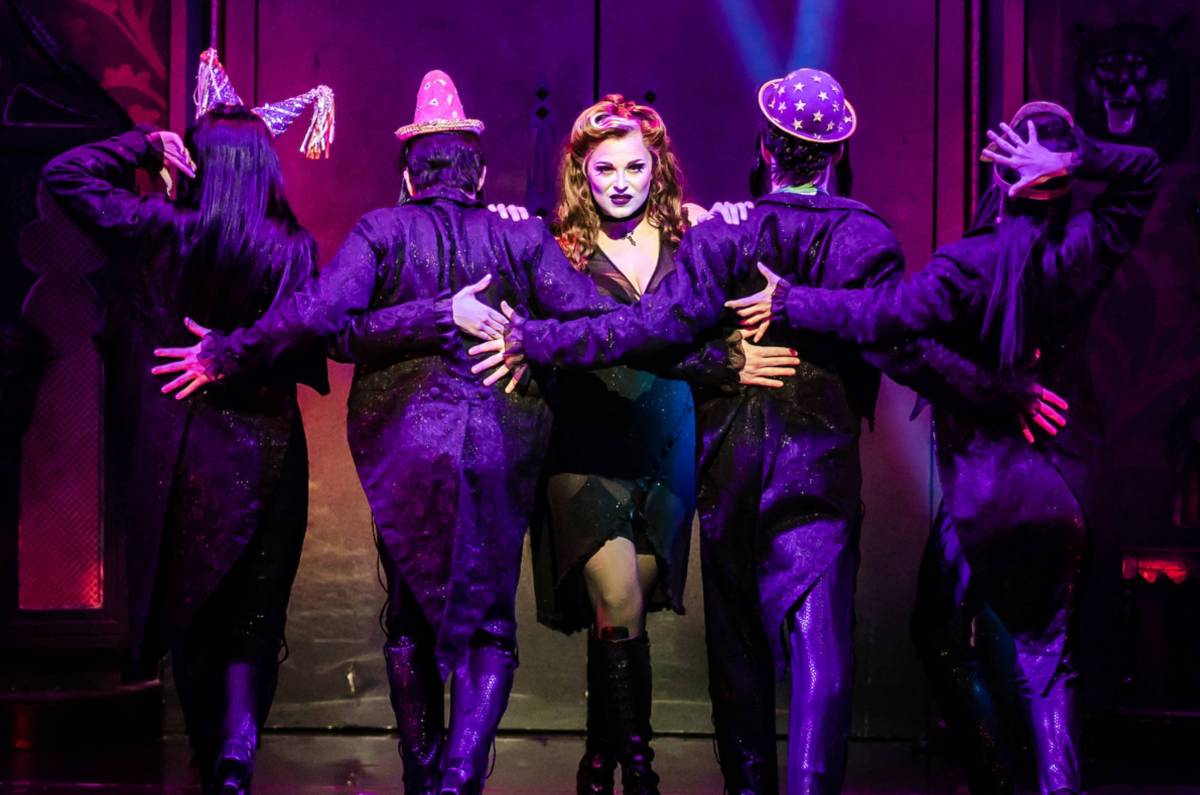
We also pay attention to the movie when we watch it, since there are generally no distractions—hopefully there is no one running around, yelling, and throwing things in your living room as you put on the DVD for the fiftieth time. As we watch it, without distractions, we take in what’s so great about it. We see why it’s such a good movie.
I’m not going to claim that everything about the production is top quality, but it doesn’t need to be. It’s supposed to be fun—a musical that parodies ‘50s B movies. The actors aren’t trying to deliver Oscar-winning performances, the characters aren’t supposed to be fully drawn, three-dimensional people, and the sets and cinematography are not supposed to be breathtaking. But none of that stops it from being a great movie. In my opinion, what makes a movie great is a combination of how entertaining it is and how meaningful it is. Those are the two areas where Rocky Horror excels.
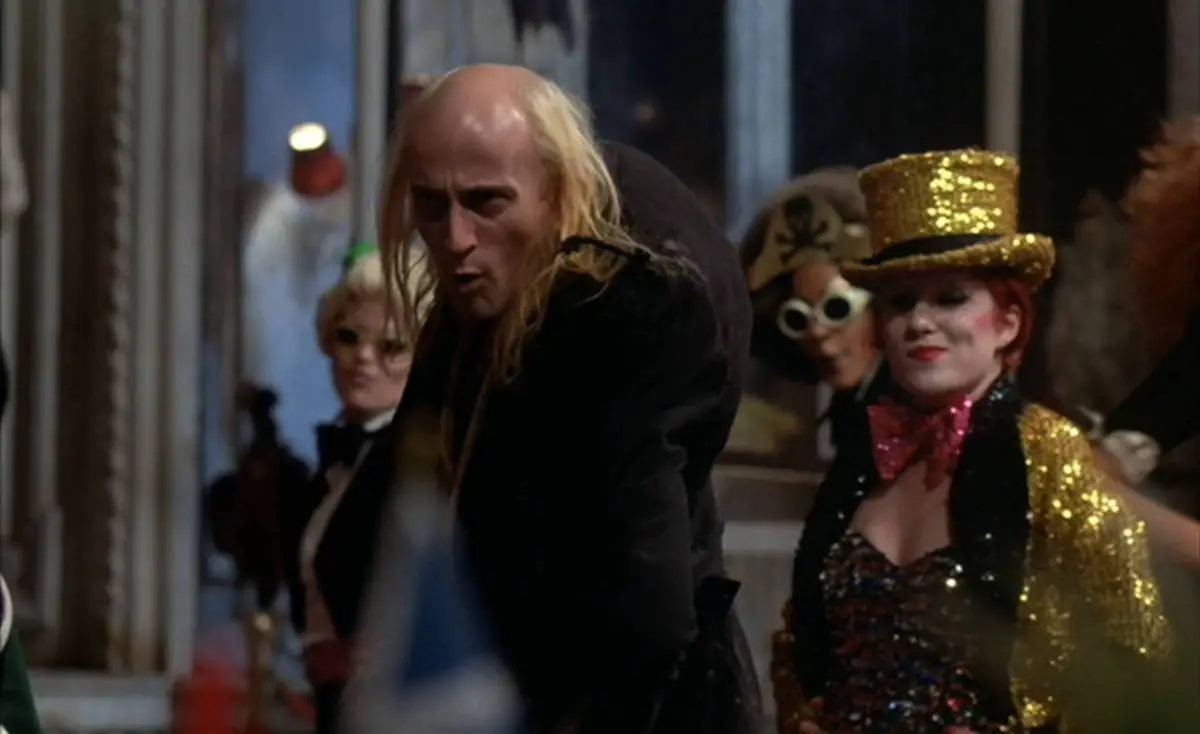
Of course it’s entertaining. It’s a musical about a transvestite alien mad scientist who creates a man to have sex with, seduces both halves of a newly-engaged couple, indulges in a bit of cannibalism, puts on a floor show, then is betrayed by an incestuous brother and sister, while every five minutes someone sings an amazing song. It’s fun, it’s silly, it’s compelling, and the music is great. But it’s also incredibly meaningful to a lot of people. People like me who it struck a chord with, whose lives it changed, without even knowing why at first. There’s a lot layered in there.
Some of the themes are more obvious, like the desire for a world where sexuality and gender aren’t policed. This is the world Frank chooses to live in, and he shows the possibilities of that world to Brad, Janet and everyone around him—as well as to the audience. The story espouses the value of being yourself, and the message of “don’t dream it, be it” is a call to action to carve out the life you want, even if it’s unconventional. The movie, the play, and the community serve as refuges for all types of outsiders, and as inspiration to go back out into our lives feeling stronger and less alone.
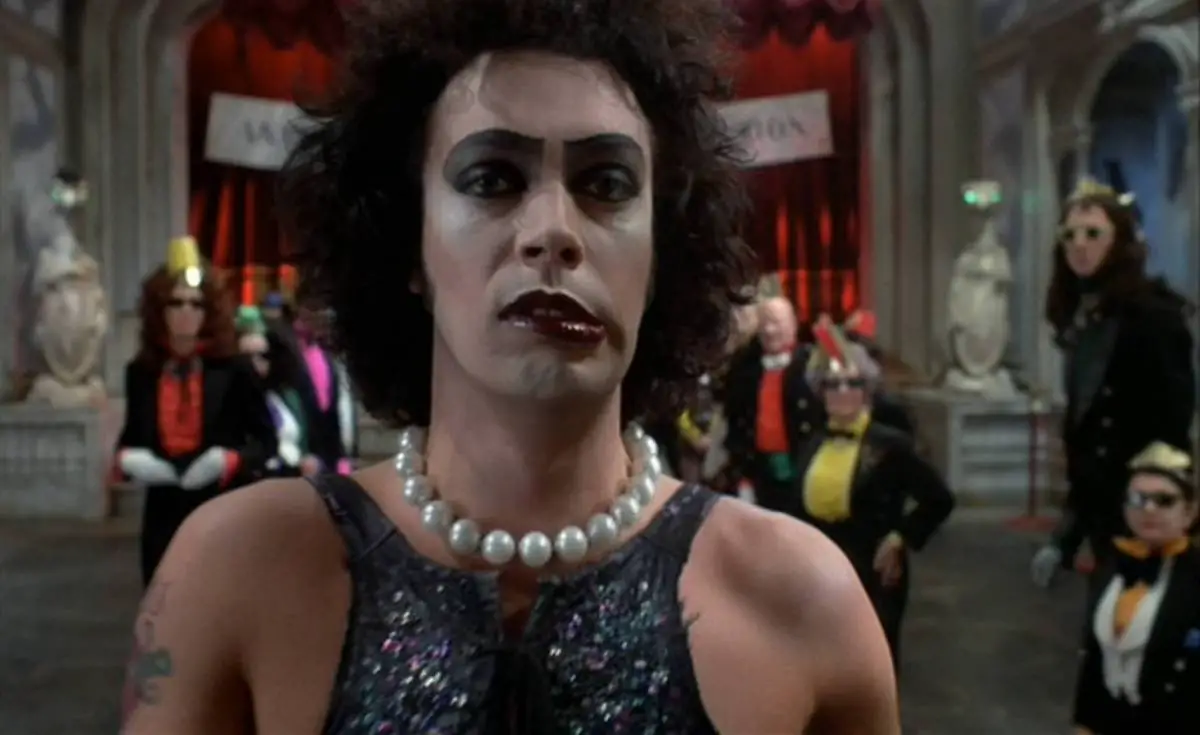
When the play debuted in 1973, and the movie in 1975, Rocky Horror pushed back against society, imagining a world that wasn’t so restrictive, and over the last 46 years it has been part of the force bringing us closer to that. Things still aren’t perfect (by a long shot), society is still evolving, and Rocky is still pushing back, every Saturday night at midnight, and every time someone watches the DVD or the play.
This is honestly helped by the fact that Rocky has become a strange amalgamation of mainstream and counterculture, somewhat normalizing things that may still be seen as unacceptable in other contexts. This seems to be especially true in the U.K., where “The Time Warp” is played at every wedding and school disco, so that you grow up learning its steps, and where it’s rare to meet anyone who outright dislikes Rocky. People either love it, haven’t seen it, or view it as a bit of fun—a chance to enjoy a night out in fishnets and a corset when the play comes to town.
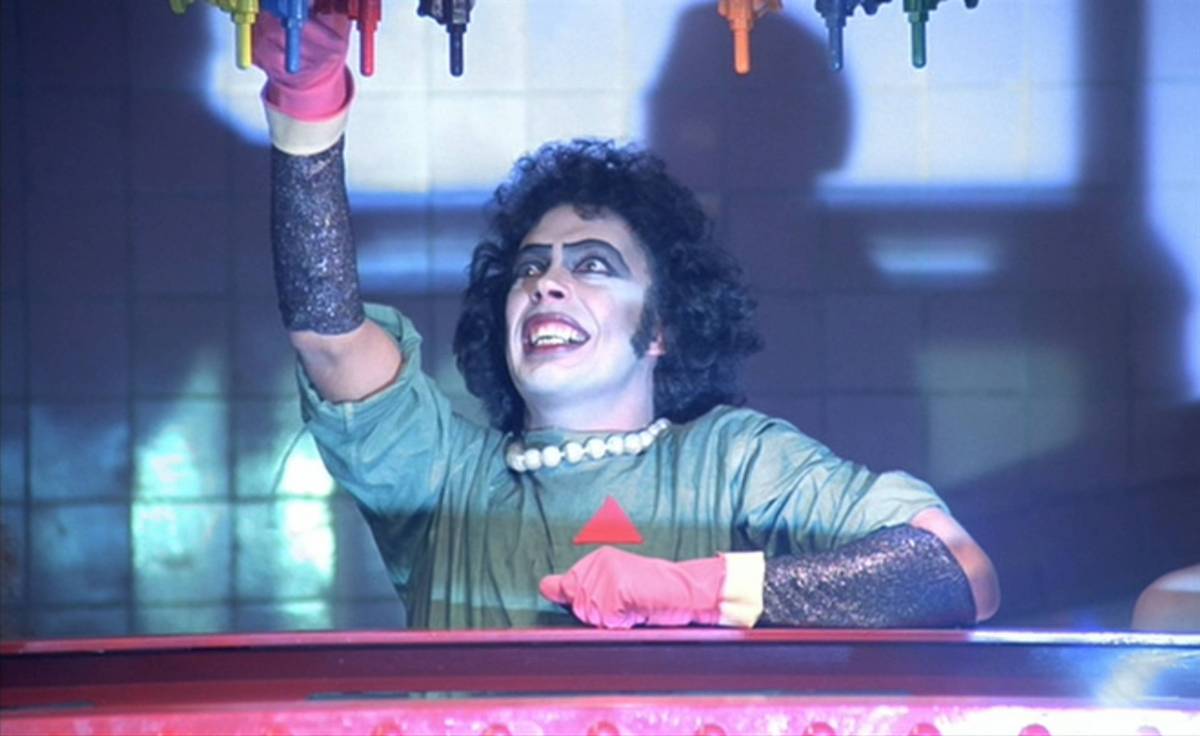
When writing Rocky Horror, Richard O’Brien effectively played with established narratives in order to set up its themes and connect with the audience. Rocky wears its influences on its sleeve, weaving together a parody of such tropes as the mad scientist, the vampire in his castle (the vampire metaphor here replaced with literal seduction), aliens among us, ‘50s sci-fi B movies, cheesy horror movies, and even the story of Adam, Eve and the serpent. In this iteration, however, the narratives are twisted to make us relate to the villain and hate the hero.
Frank isn’t even an anti-hero, he is clearly the villain—he kills people, he uses people, and he dies for it. However, his character also possesses traits that, while deemed to be villainous by a heteronormative society, actually aren’t. Traits that many of us relate to, like his unconventional lifestyle, sexuality and gender expression.
Frank is designed to be charismatic, sympathetic and relatable, but he is also designed to point out that society often tries to cast people with his unconventional traits as being villains—as being just as bad as him, as being genuinely dangerous, and as being in the wrong. As outsiders, we take pleasure in rooting for Frank against the society determined to cast us in that role, pushing back against them. Frank similarly pushes back against his adversaries, such as Dr. Scott—an implied former Nazi, representing the societal pressure to conform to standard ideals.
Just as Frank is a villain designed to be loved, Brad is a hero designed to be hated—so much so that an entire worldwide subculture has evolved to automatically shout “ASSHOLE!” at the mere mention of his name. Brad is the embodiment of conformity. He represents denial, maintaining the status quo, hiding his true self, and upholding a system that requires others to do the same. Unlike Frank, Brad is exactly the kind of person society does see as a hero—a straight, cisgender man, boring and ineffectual, but staunchly adhering to everything that’s expected of him. We rail against him for upholding the structures that say this is the only acceptable way to be—even though it becomes clear that even Brad himself isn’t really this way, based on his attraction to Frank.
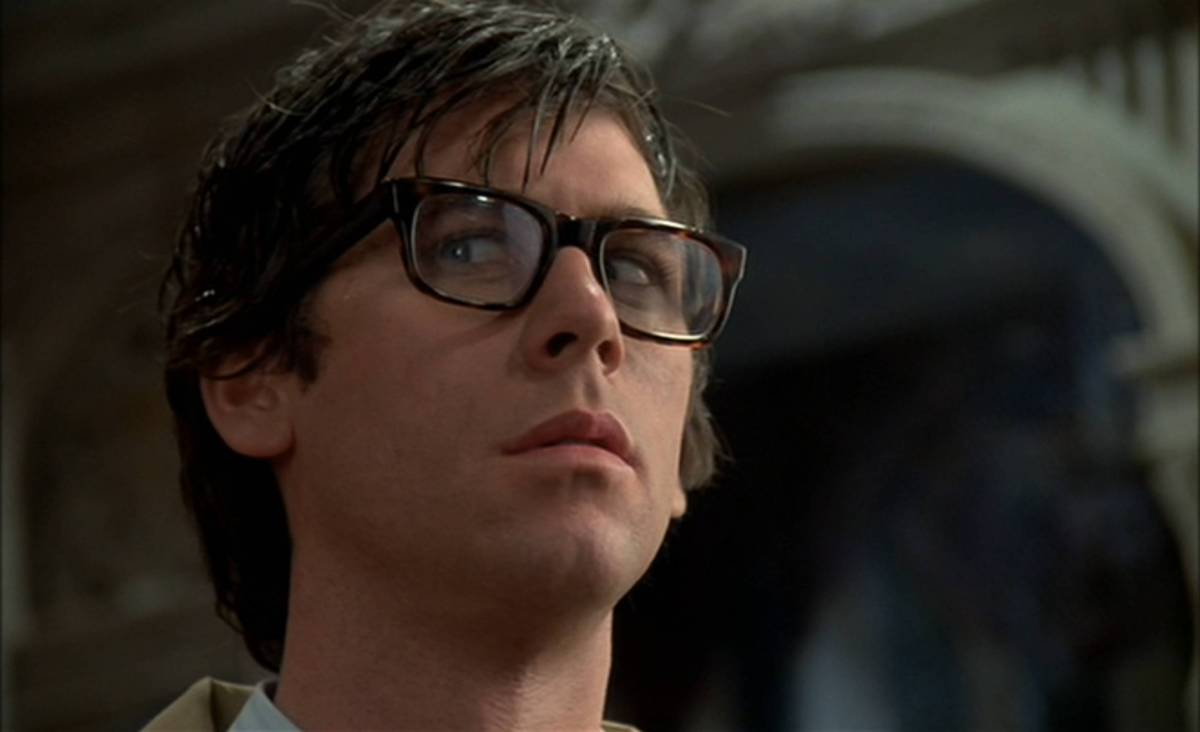
On another level, Rocky is a movie that changes people’s lives, about movies changing people’s lives. It’s about itself. Brad and Janet’s journey of discovery, as they encounter Frank and are forever changed by his influence, echoes the journey of a fan first discovering Rocky, or any other work of art, and being forever changed by it.
Brad and Janet start out as innocent and seemingly conventional, just doing whatever they think they’re supposed to. When they meet Frank, he changes their perspective—the way that they see themselves and the world around them. He opens them up to the feelings they’ve been suppressing, and the possibilities they’ve never acknowledged. For one night, they escape into a different world, and afterwards they’ve started to figure out who they truly are and what they really want, outside of the constraints they were previously bound by. The whole plot of Rocky is a love letter to the way art and entertainment—movies in particular—can change our lives.
Emphasizing this theme, Rocky is packed full of references to movies, not just in its plot, but also in its sets, its dialogue, and its lyrics. It’s bookended by the song “Science Fiction/Double Feature” and its reprise—a loving ode to the sci-fi B movies that Richard O’Brien grew up watching. In the movie, the song emanates from the now iconic lips set against a black screen, but in the play, it’s sung by an usherette, putting the theatre audience in the frame of mind of the movie-going experience right from the start. Some productions of the play have incorporated film strips and other cinematic elements into their sets, while the set of the movie contains further nods to the world of film, perhaps most notably the RKO tower.

Aside from “Science Fiction/Double Feature”, there are two other songs that I always felt fit the theme of movies generally, and of Frank representing life-changing works of art specifically, though these songs tend to be overlooked as such. They are, in fact, probably my two favorite Rocky songs, “Over at the Frankenstein Place” and “Super Heroes”. “Over at the Frankenstein Place” features Brad and Janet (and Riff Raff, briefly) singing about a light in the darkness at the “Frankenstein place”, most literally interpreted as the light in the window of Frank’s castle, as they make their way there through the rain to ask for help. The play features an extra verse, sung by Brad, which was excluded from the film version:
Janet
In the velvet darkness
Of the blackest night
Burning bright
There’s a guiding star
No matter what or who you are
Brad and Janet
There’s a light
Chorus
Over at the Frankenstein place
Brad and Janet
There’s a light
Chorus
Burning in the fireplace
Janet
There’s a light, light
In the darkness of everybody’s life.
Brad
I can see the flag fly
I can see the rain
Just the same
There has got to be
Something better here for you and me
Brad and Janet
There’s a light
Chorus
Over at the Frankenstein place
Brad and Janet
There’s a light
Chorus
Burning in the fireplace
Brad
There’s a light, light
In the darkness of everybody’s life
Riff Raff
The darkness must go
Down the river of night’s dreaming
Flow morphia slow
Let the sun and light come streaming
Into my life
Into my life
Brad and Janet
There’s a light
Chorus
Over at the Frankenstein place
Brad and Janet
There’s a light
Chorus
Burning in the fireplace
There’s a light, light
Brad and Janet
In the darkness of everybody’s life
To dig a little deeper, if Frank represents a life-changing movie or other work of art (potentially Rocky itself), then the song is actually about the experience of first discovering that movie. The darkness that Brad and Janet are in represents the darkness of everyday life, its hardships and struggles. The light that they’re heading towards in Frank’s castle is Frank himself, representing the movie that they’re about to discover. That movie is going to drive the darkness away, to provide hope, inspiration, and an escape from their struggles.
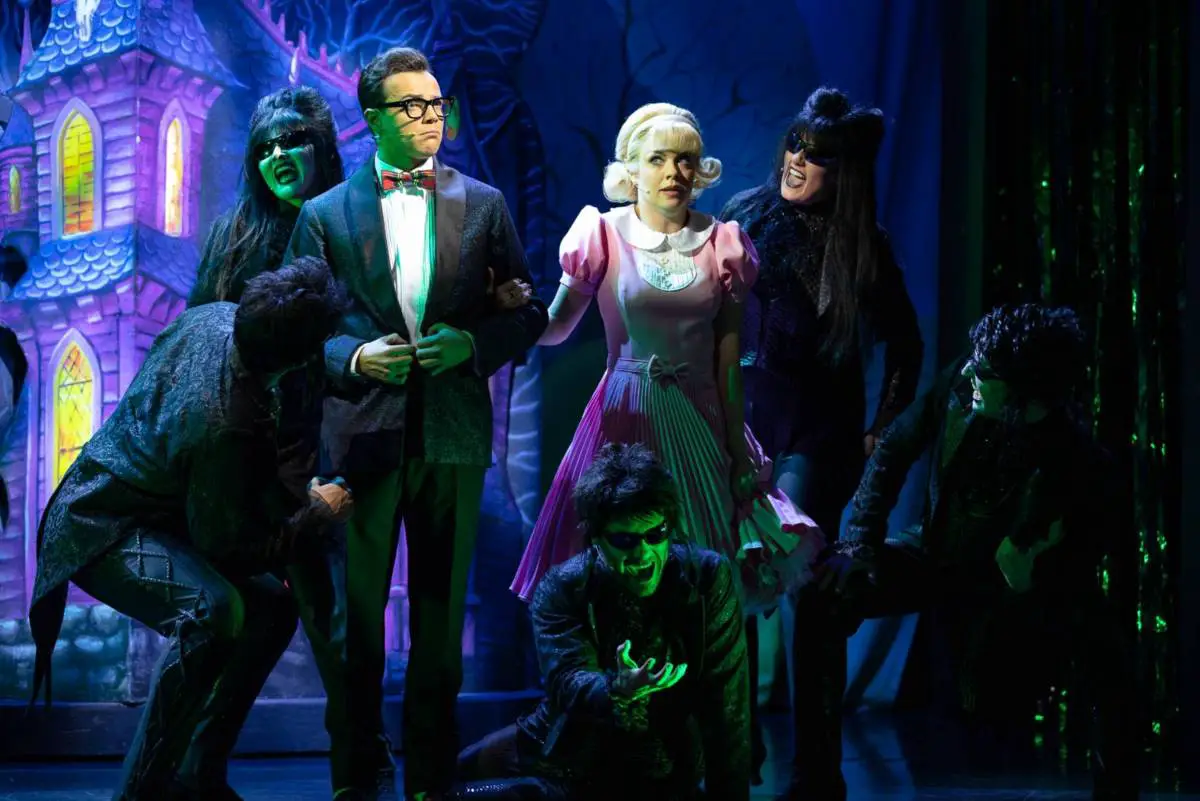
This is perhaps best illustrated in Riff Raff’s verse. Riff Raff, who is already in the castle, has already discovered the movie. He sings about dreams (a concept that’s interchangeable with fantasies or, in this case, movies), which banish the darkness (his own struggles), and allow sun and light to stream into his life (i.e. movies bring happiness and other positive effects into his life).
Then we have “Super Heroes”, which, on the surface, might seem a bit more gloomy:
Brad
I’ve done a lot
God knows I’ve tried
To find the truth
I’ve even lied
But all I know
Is down inside I’m
Chorus
Bleeding
Janet
And super heroes
Come to feast
To taste the flesh
Not yet deceased
And all I know
Is still the beast is
Chorus
Feeding
Narrator
And crawling on
The planet’s face
Some insects called
The human race
Lost in time
And lost in space
And meaning
Chorus
Meaning
A super hero is essentially a fictional character who exists in art, but not in reality, and who saves people. This could be interpreted as being Frank, who, while not a hero, only exists in art, represents life-changing movies, and saves Brad and Janet, as well as real-life fans, from their everyday struggles. Janet’s verse touches on the imagery of flesh being eaten, which could either be taken in a literal sense or seen as a sexual awakening, like the one she just experienced.
Either way, to me it represents the fact that even though Frank is dead, the influence he had on her is a profound and lasting one, which is affecting her very being and will continue to do so for a long time to come. Similarly, when we reach the end of Rocky (or another work of art) for the first time, its influence on us and our lives may just be beginning. Sometimes this is hard or challenging, for instance if it forces us to face things about ourselves or the world that we’ve been avoiding, hence the grim tone of the song, but once we face those things, our lives are likely to improve.
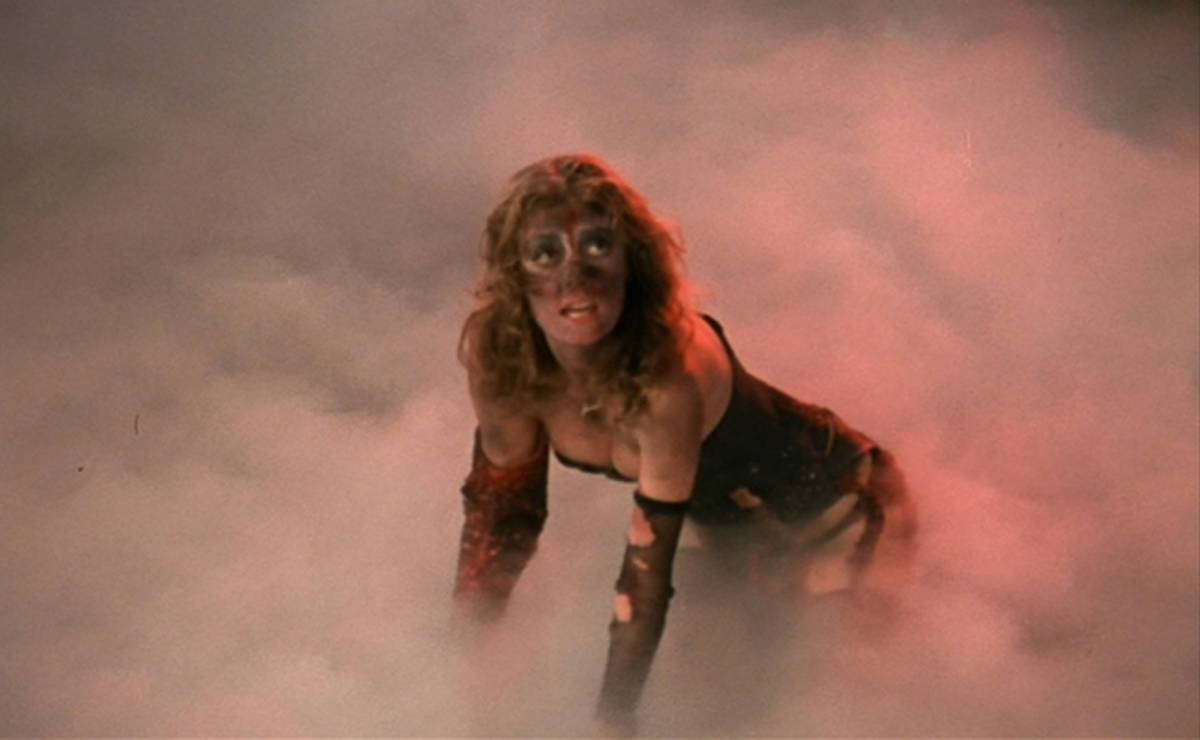
Brad’s verse seems to touch on the fact that he’s tried to face difficult truths about himself, that he’s failed, and that he’s been in denial. The line, “down inside I’m bleeding,” in relation to Janet’s verse, seems to suggest that he’s still processing the effect Frank has had on him, and that he is actually in the process of coming to terms with everything he’s been struggling with. The Narrator’s (or in the movie the Criminologist’s) verse describes the struggle of humanity to find meaning, and to make sense of our lives. This is precisely what drives us to art and entertainment in the first place, looking for answers, and that is what makes art so essential.
If you think Rocky is a bad movie, that it doesn’t mean anything, then I’ll respectfully disagree. However, there is a balance. In the U.K., we may be more likely to appreciate the meaning behind the movie, but we don’t have that community. Not on the same level as exists in the U.S. Yes, in the U.K. I’ve found friends who also love Rocky, and we’ve bonded over it. I’ve occasionally gotten the chance to go to a Rocky-related event, a rare screening, a performance of the play. But in the U.K. that can never be your everyday reality.
In the U.S., you can go to the movie every week. You can join a cast, meet a ton of people that you have things in common with, and become part of that community. When I moved halfway across the world by myself, Rocky was how I started my new life. Not only did I go to see it every week and eventually join the cast, but I got a job I loved through it, a great apartment, a wonderful roommate, some of the best friends I’ve ever had, a relationship, and even adorable pets—all through connections I made at Rocky.
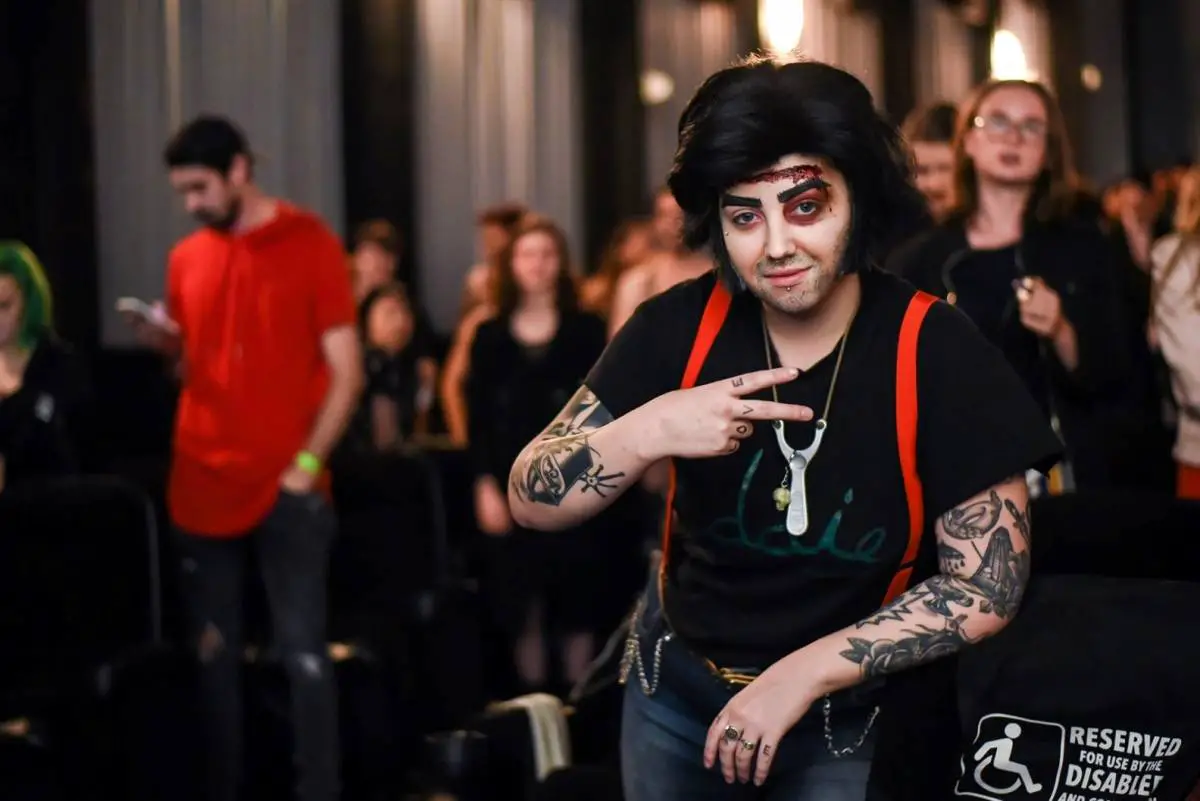
I had some amazing experiences while on cast, going to conventions all over the country, and even getting to perform at a music festival—something I never thought I’d do! I quit cast when I felt I no longer had the time or the energy for it, but I still go to the show about once a month. I may no longer be on cast, but there’s still something special about knowing that on any given Saturday night, if I want to, I can walk down the street, watch my favorite movie, and hang out with a bunch of people that I either already know, or have a load of stuff in common with.

